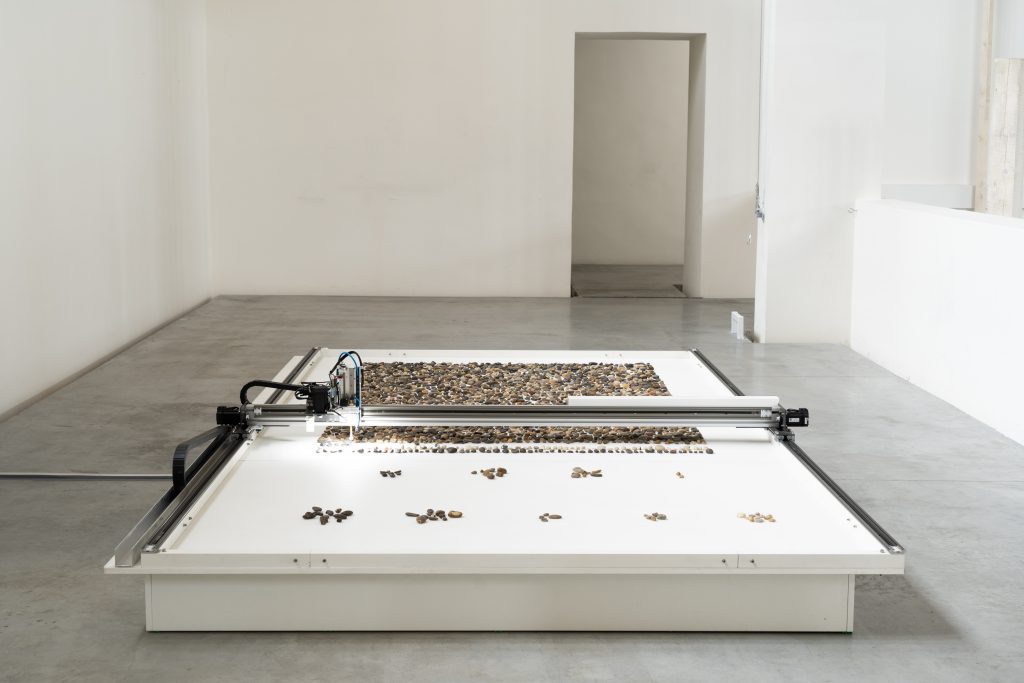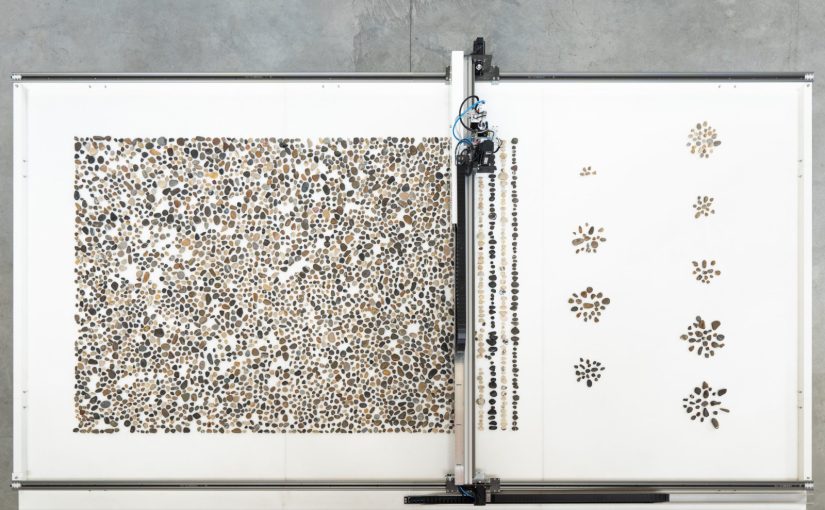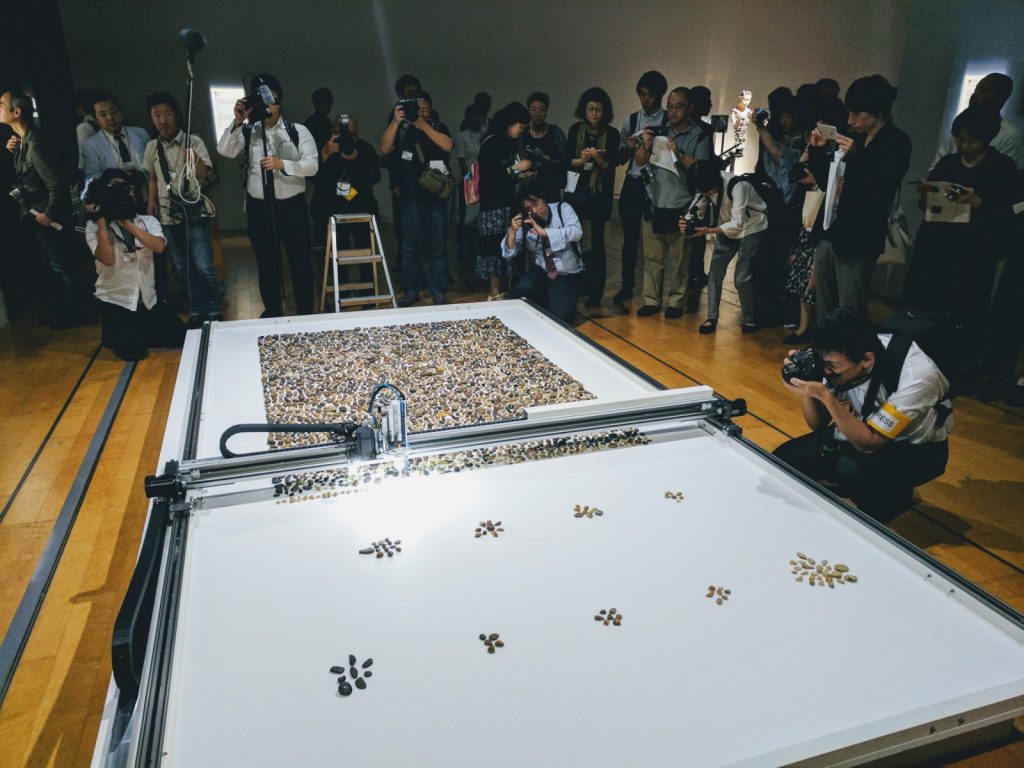

“Ignorance, the title of Bartoniček-Maus exhibition in Ex Post where Jller was premiered in 2015, responded to current trends in mass production – speed, efficiency, and low price. Of course, these apparent benefits impact ecology, but the authors were most interested in the impact on culture – that is, the loss of knowledge, such as forgetting original production methods and crafts. The hunt for a low production cost contributes to the loss of the ability to work manually and work together – to create value. These tendencies play a crucial role in the degree of “ignorance” and lack of interest of individuals in their surroundings and development.” — Ex Post Gallery
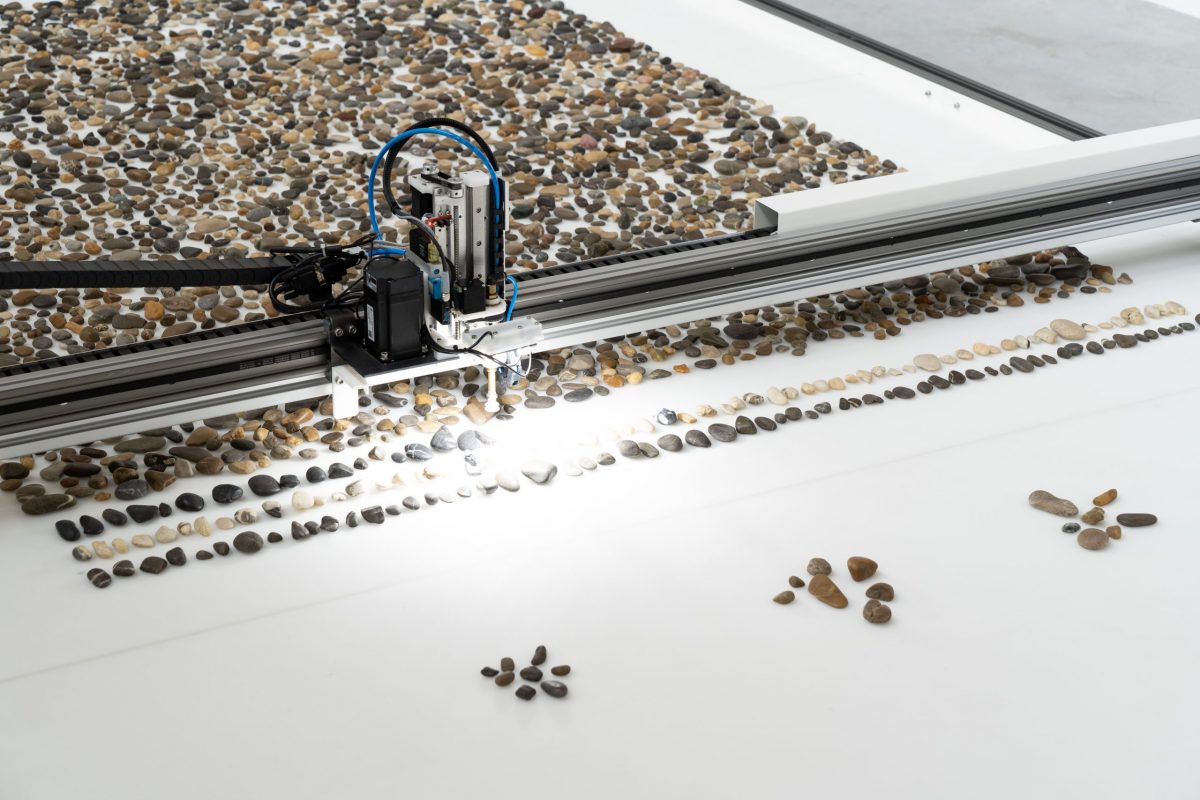
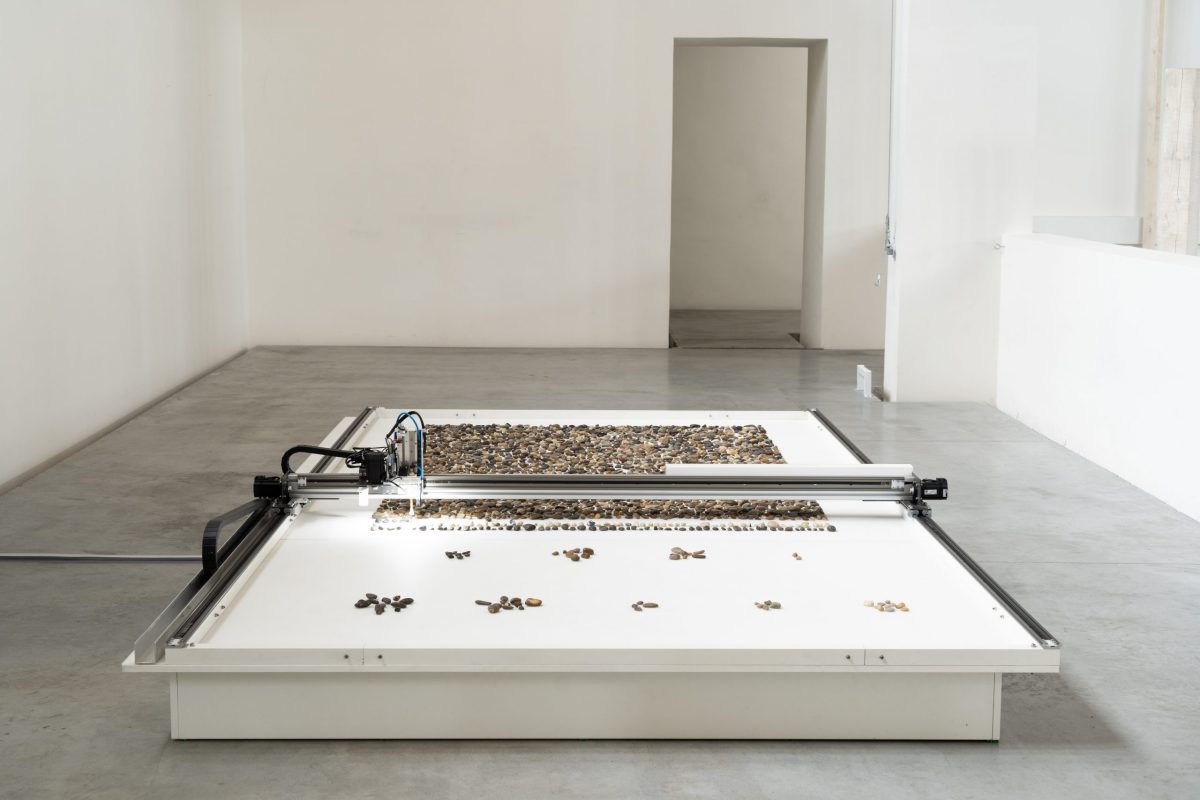
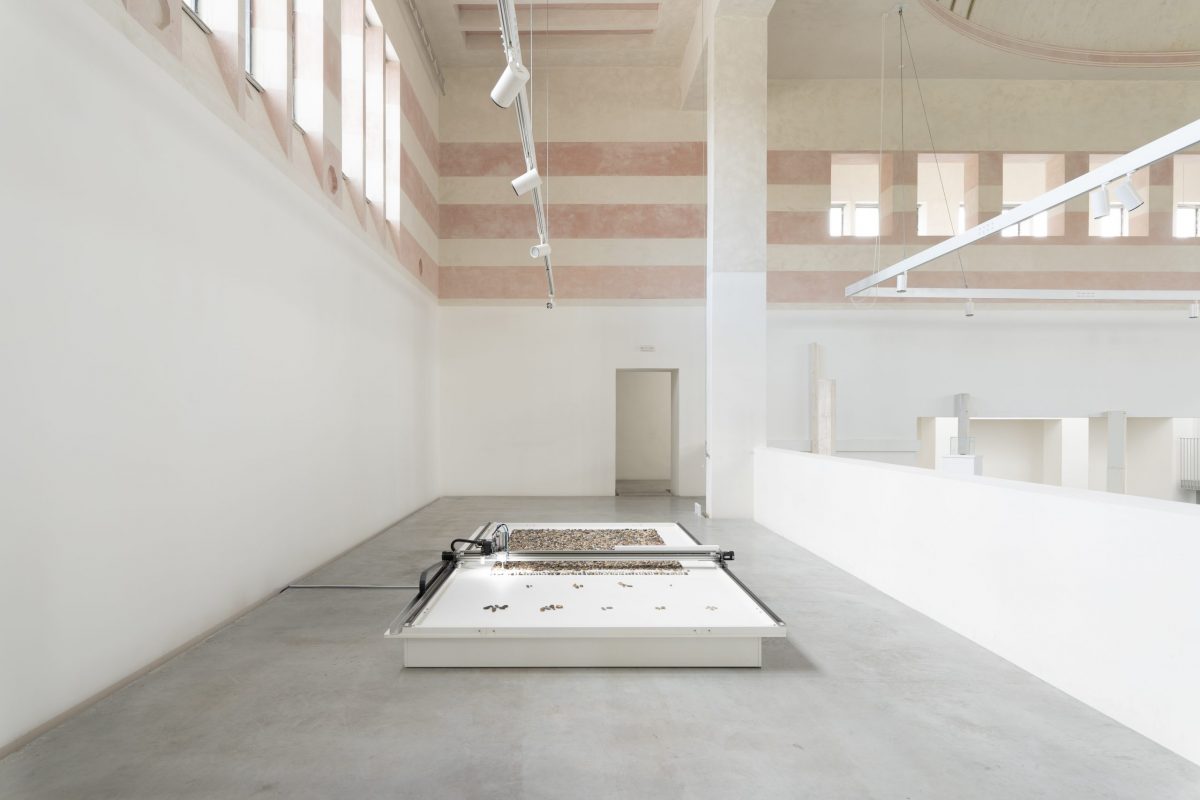
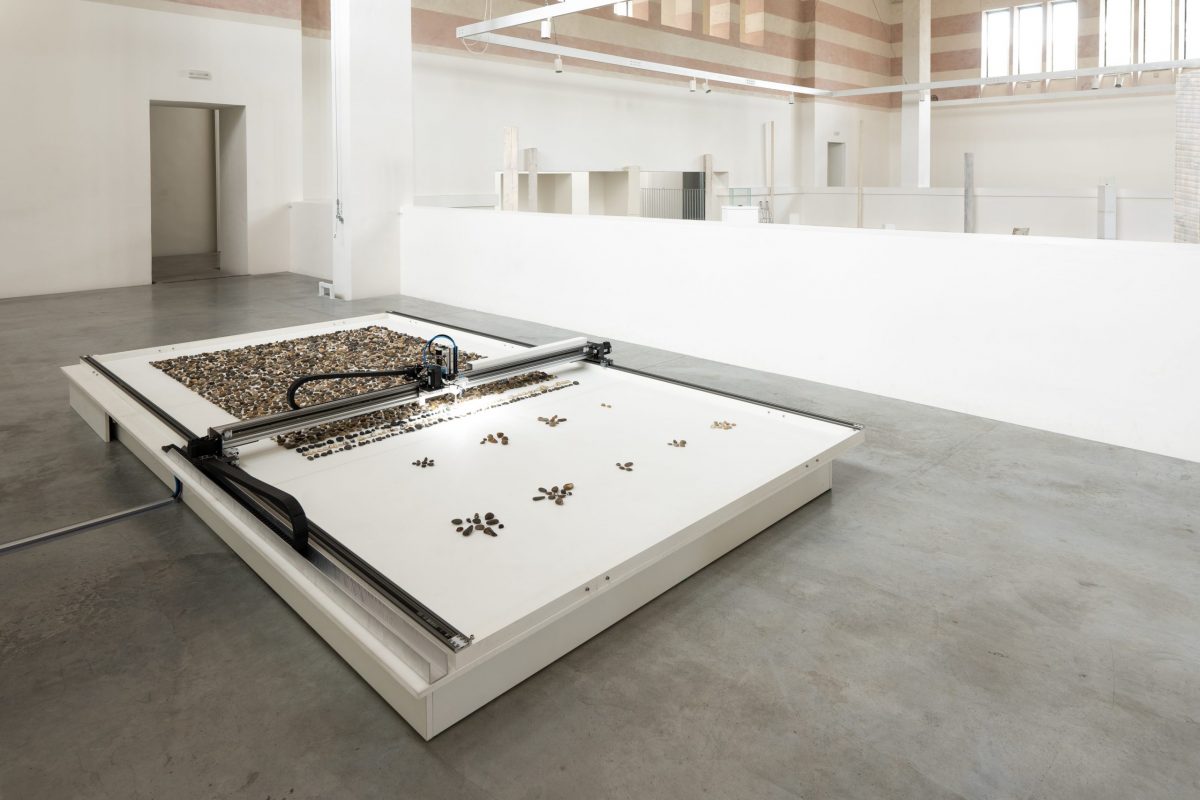
.. If a Romanticist says through his work ‘look at nature, and through it at me’ and a Classicist, on the contrary, says ‘look at my work, and through it at the universe’, then Jller is a work of electronic Classicism. ..
Richard Drury, the chief curator of the Gallery of the Central Bohemian Region (GASK) – Read the full text here.
Exhibited: Ex Post, Prague (CZ), 2015 Ars Electronica, Linz (A), 2016 Japan Media Arts Festival, Tokyo (JP), 2017 Error by Ars Electronica, Berlin (DE), 2018 New Synagogue, Zilina (SK), 2019 National Technical Museum, Brno (CZ), 2020-2021
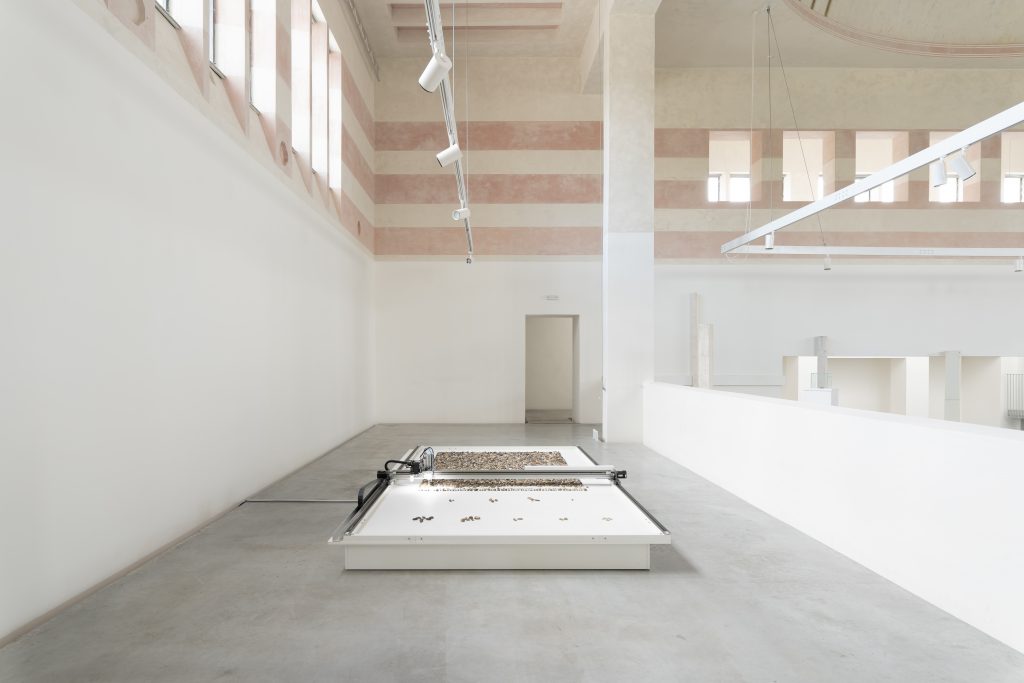
Jller is a collaboration between Prokop Bartoníček and Benjamin Maus. (Ignorance exhibition at Ex Post)
Jller is part of an ongoing research project in the fields of industrial automation and historical geology. It is an apparatus that sorts pebbles from a specific river by their geologic age. The stones were taken from the stream bed of the German river Jller, shortly before it merges with the Danube, close to the city of Ulm. The machine and its performance is the first manifestation of this research.
A set of pebbles from the Jller are placed on the 2×4 meter platform of the machine, which automatically analyzes the stones in order to then sort them. The sorting process happens in two steps: Intermediate, pre-sorted patterns are formed first, to make space for the final, ordered alignment of stones, defined by type and age. Starting from an arbitrary set of stones, this process renders the inherent history of the river visible.
The history, origin, and path of each stone found in a river are specific to the location, as every river has a different composition of rock types. The origin of those stones is well documented. For instance, the ones from the river Jller derive from two origins. Some come from rocks, that are the result of erosions in the Alps and are carried in from smaller rivers. Other stones have been ground and transported by glaciers that either still exists, or existed in the ice ages. As the Alps and flats, which were once covered by glaciers, have shifted, even deeper rock layers were moved and as a result, stones from many geologic periods make their way into a river. When the history of a river is known, the type of stone can be directly related to its geological age.
The machine works with a computer vision system that processes the images of the stones and maps each of its locations on the platform throughout the ordering process. The information extracted from each stone is the dominant color, color composition, and histograms of structural features such as lines, layers, patterns, grain, and surface texture. This data is used to assign the stones into predefined categories. Those categories represent the range of stones that can be found in a specific river and correspond directly to the age of the stone. They are the result of a classification system that is trained by sets of manually selected and labeled stones. Because there are only a limited number of stone types that can be found in a specific river, this system proves to be very accurate.
“Someone Built a Rock-Sorting Robot and It Is Downright Hypnotizing – Two artists built a robot that sorts stones and it’s totally spellbinding.“
Articel in the WIRED magazine by Liz Stinson.
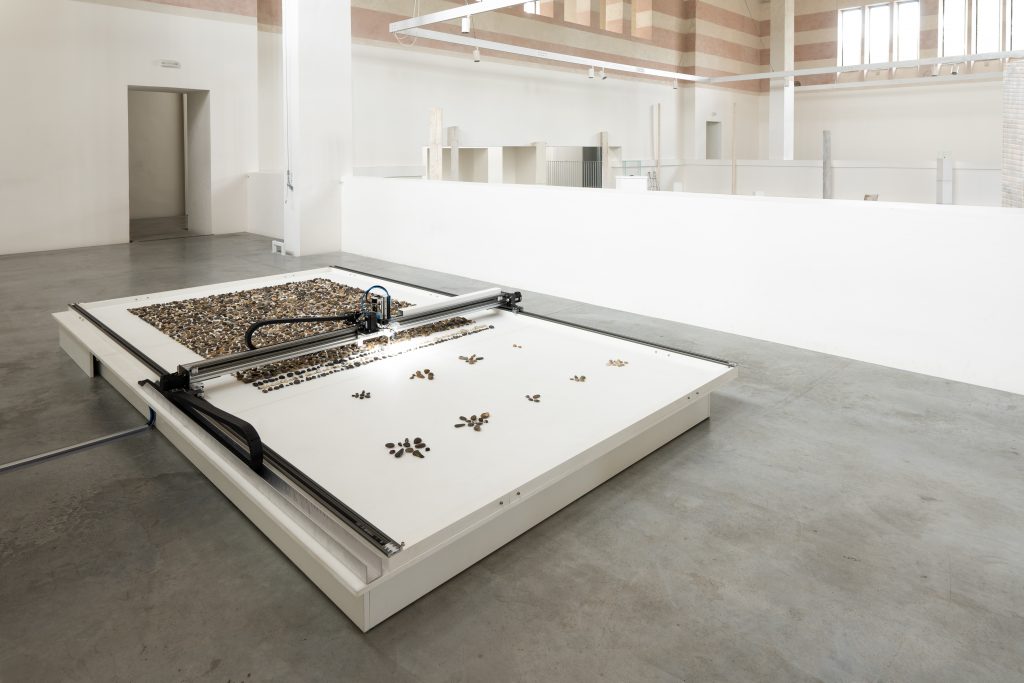
Credits: Authors: Prokop Bartoníček, Benjamin Maus Mechanics: Benjamin Maus, Tomislav Arnaudov, Prokop Bartoníček Electronics: Benjamin Maus, Pavol Rusnak, Tomislav Arnaudov Programming: Benjamin Maus, Pavol Rusnak Developed at: pebe/lab (Prague) and FELD (Berlin) Built at: Ex Post, Prague The project was supported by the Czech-German Future Fund.
